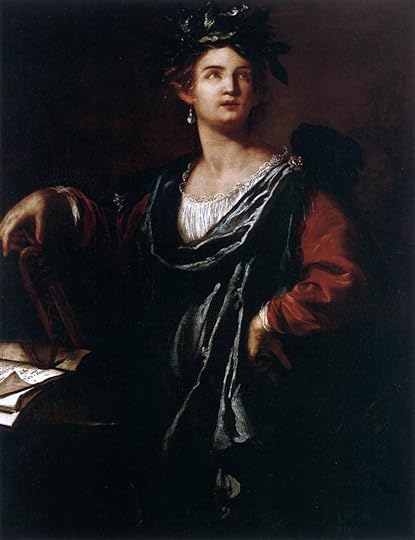The Storybook: Klio and Euterpe
So, every so often (usually when Facebook won’t let me share posts to my author page), I poll the Misfits about the kind of posts they’d like to see me write about. One of the most popular ideas was mythology related to gods and spirits ruling over the domain of creativity. So, who better to start with than the actual Muses?
*sigh* Full disclosure, I’m not an ancient historian or a classicist. Yes, I have a degree in archaeology; yes, I’m a big nerd whose favourite hobby is research; and yes, I am a pagan who kinda-sorta works with one of the Muses. None of that makes me an expert in Greek mythology or history. There is so much, you guys. The problem with ancient stories and religion is that their history is long, complicated, and shifts wildly over time and region.
Just thinking about someday having to talk about Thoth (or, really, any Egyptian) makes my chest feel tight and my eyes moist. I mean, I’ll do it, but the dread is real.
So, with that in mind, let’s lower the expectations, and move forward.
The Muses, like a lot of figures in Greek mythology, likely predate Greek culture, and might come from the Thracian Empire, which recognised 3 Muse-like figures. It seems like we decided ultimately on 9, mostly because famous poets like Homer said there were 9.
So, with all of that out of the way, let’s carry on. When last we spoke of the Muses, I touched a bit on the history of how The Muses came to be, what they collectively represent, how to approach them. I also touched a little on Calliope, Queen of the Muses, and my personal muse. This year, I’m going to introduce Klio and Euterpe.
~This post contains affiliate links. If you’re interested in any of these items, please consider purchasing through the link provided. It gives me a little bit of Jeff Bezos’ filthy, filthy lucre because writing full time is expensive, and he doesn’t need the money for more joyrides in space.  ~
~
‘Kleio’ with a K means, ‘to exalt’ or ‘to celebrate.’ The spellings are interchangeable, but the K is thought to be more accurate to her original name.
With her parchment scrolls, open books, tablets, and trumpets, she is called, ‘the Proclaimer,’ and her symbols also include water clocks and laurels.
This glory and time association makes her the muse of history. She is the muse who tells the great true stories of war, love, and cleverness.
One funny story is that she mocked Aphrodite for falling in love with Adonis because Aphrodite is a mess. So in revenge, Aphrodite cursed her to fall in love with Pireus, son of King Magnus, with whom she had a son, Hyacinth. Hyacinth was famously a lover of the god, Apollo (who is sometimes romantically involved with all 9 Muses, yikes), as well as the West Wind, the North Wind, and a mortal Spartan singer.
So like, yeah your boyfriend may be a pretty boy, but my son is THE pretty boy. Bit of an own goal, there.
How to invoke
Set laurels on your altar, wear laurels in your hair or on your head. Proudly proclaim your accomplishments, past and present.
 Clio by one of my faves, Artemisia GentileschiEuterpe
Clio by one of my faves, Artemisia GentileschiEuterpeEuterpe’s name means, ‘bringer of delight’ or ‘rejoicing well.’ She is generally regarded of the myse of music and lyric poetry.
Lyric poetry, for those who have heard the term over and over, but never an actual explanation for what it is, is a type of poetry, usually accomplished by music, that explores emotion and feelings in the first person. Very recogniseable, even today, as most of the songs you like. That’s Euterpe.
She is also thought to be the inventer of the aulos, or the double flute, as well as other wind instruments. For this reason, she is the muse of musicians and performers.
 Euterpe by Jean-Baptiste Auguste Clésinger, on the grave of pianist, Frédéric Chopin
Euterpe by Jean-Baptiste Auguste Clésinger, on the grave of pianist, Frédéric ChopinHow to invoke
Play music, especially music you wrote. Pray to her before writing new music or poetry
~~~~
If you love the Muses and want to explore modern Greek myth a little more, have a look at my sister’s book, Mount Helicon.




